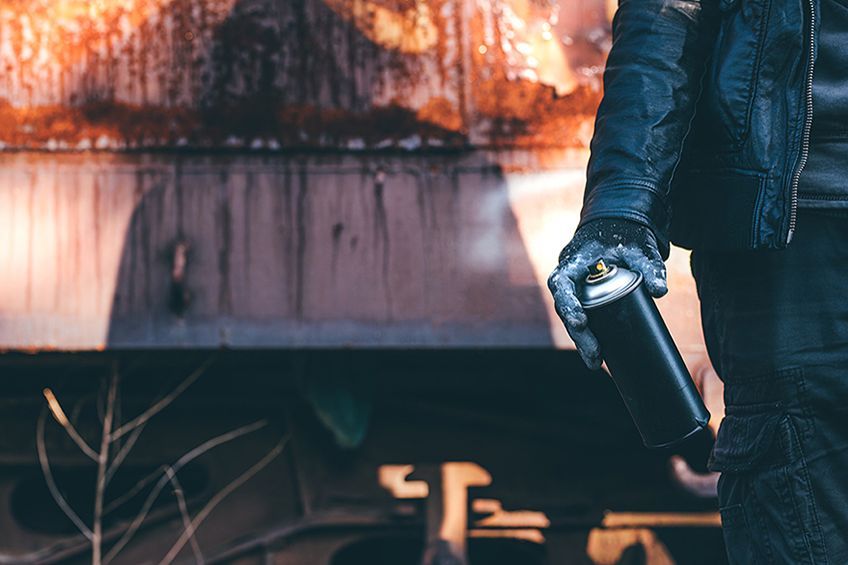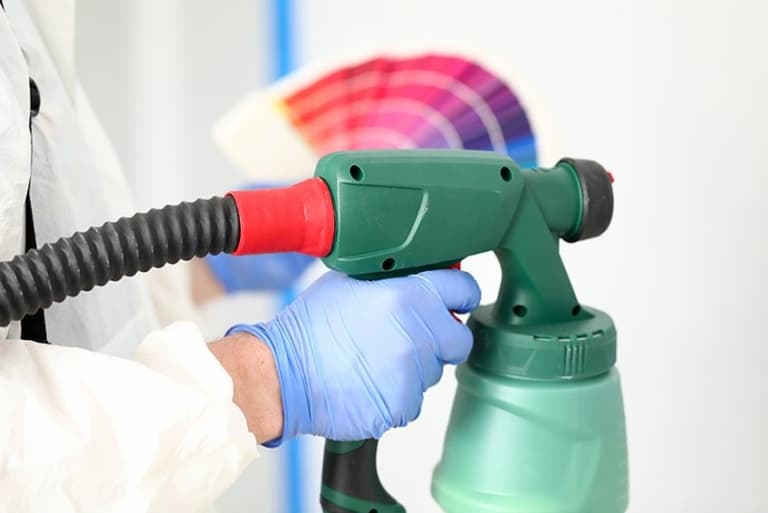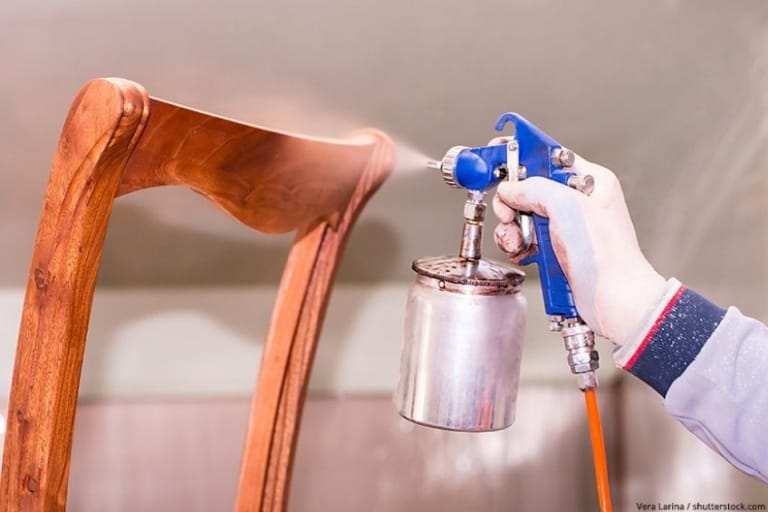Best Paint Stripper for Metal – The Best Way to Remove Paint from Metal
Disclosure: There are some affiliate links below and I may receive commissions for purchases made through links in this post, at now additional cost for you.
Stripping paint from metal is something that anyone can handle, and if you plan on refurbishing painted metal then you will have to know how to strip paint from metal. There are a number of methods you can try when attempting to remove paint from metal. The best way to remove paint from metal is to apply a chemical paint stripper. We have put this article together to aid you in selecting the best paint stripper for metal. It will also show you some of the less toxic options of stripping paint from metal.
Table of Contents
- 1 What Is Paint Stripper?
- 2 Recommended Chemical Paint Strippers
- 3 How to Remove Paint From Metal Using Paint Stripper
- 4 Alternative Methods for Stripping Paint From Metal
- 5 Tips and Tricks for Stripping Paint From Metal
- 6 Frequently Asked Questions
- 6.1 Will Paint Stripper Cause Permanent Damage to Other Surfaces?
- 6.2 Can Chemical Paint Stripper be Applied to Brass?
- 6.3 Will Paint Strippers be Able to Remove All Types of Paint from Metal?
- 6.4 Can Paint Stripper Be Applied to Aluminum?
- 6.5 What Chemicals Are in Paint Stripper?
- 6.6 How Long Should Paint Stripper Be Left on the Painted Metal Surface?
- 6.7 Can I Use Vinegar to Remove Paint?
What Is Paint Stripper?
The term paint stripper refers to a substance that can be utilized to remove paint from metal. These chemicals are available in a number of different formulations. Each method has its own positive and negative elements. You usually use a brush to apply these chemicals. They are effective in removing an assortment of different types of coatings and paint effectively.

Types of Paint Strippers
There are two types of chemical paint strippers, these being Caustic and Solvent. These chemicals are specifically formulated to remove coatings such as paint and shellacs from an assortment of surfaces. You need to be careful when working with either type of strippers as the chemicals they are made from are normally toxic.
What follows is a list of paint strippers available on the market. These include solvent and caustic paint strippers, as well as the less toxic options of mechanical and eco-friendly formulas.
Solvent Paint Stripper
Some solvent paint strippers used to be made with a formulation that included methylene chloride. These are toxic chemicals and have even been banned in certain countries. These days, other chemicals are being utilized in their place. Toluene (also known as methyl benzene) is an ingredient that is commonly used in solvent paint strippers. This substance is effective in dissolving paints and resins. Solvent strippers dissolve the paint by penetrating it, breaking down the paint’s bond. Unfortunately, the solvent emits fumes that are harmful to your respiratory system. When you are working with solvents, we strongly recommend you wear a respirator.
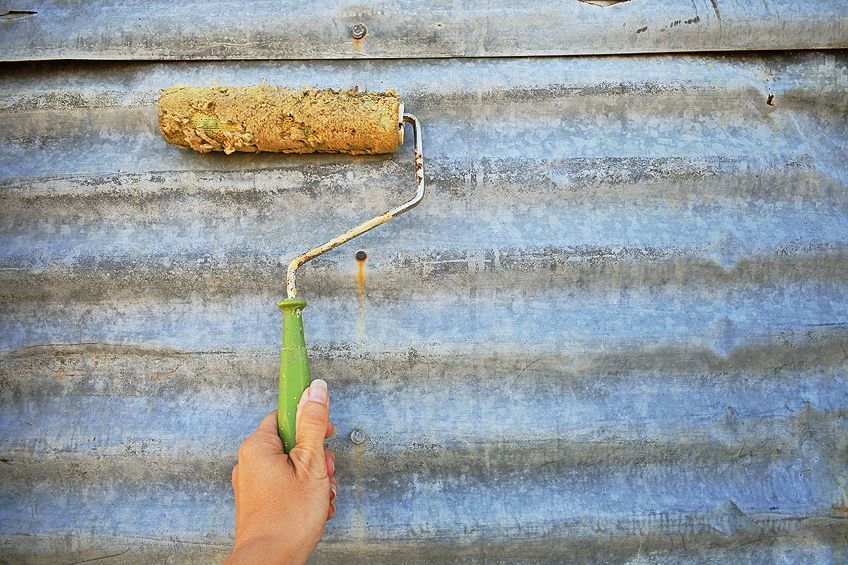
Caustic Paint Stripper
Sodium hydroxide (also known as caustic soda or lye) is found in caustic paint, it is part of the formulation as the active ingredient. This particular chemical has to be handled carefully as it is particularly toxic. But it is effective in breaking down the paint’s chemical bond through a chemical reaction called hydrolysis. Before you can recoat the surface, you will need to neutralize the formula, as it can cause your new coat to not adhere.
These formulas are very dangerous and can result in severe burns, while also being very toxic. Take extra care when working with them.
Mechanical Paint Strippers
One of the best ways to strip paint from metal is to use mechanical means. If you are dealing with old, flakey paint, then this is the ideal solution. If you are okay with a little hard work, then abrasive stripping pads are perfect. They are available as angle grinders or drill attachments that will speed up the process significantly. You will create a significant amount of debris and dust when using abrasive techniques. It is recommended that you wear the necessary safety gear, such as a respirator, goggles, and gloves when working with abrasive power tools to ensure you do not inhale any dust or end up with any injuries.
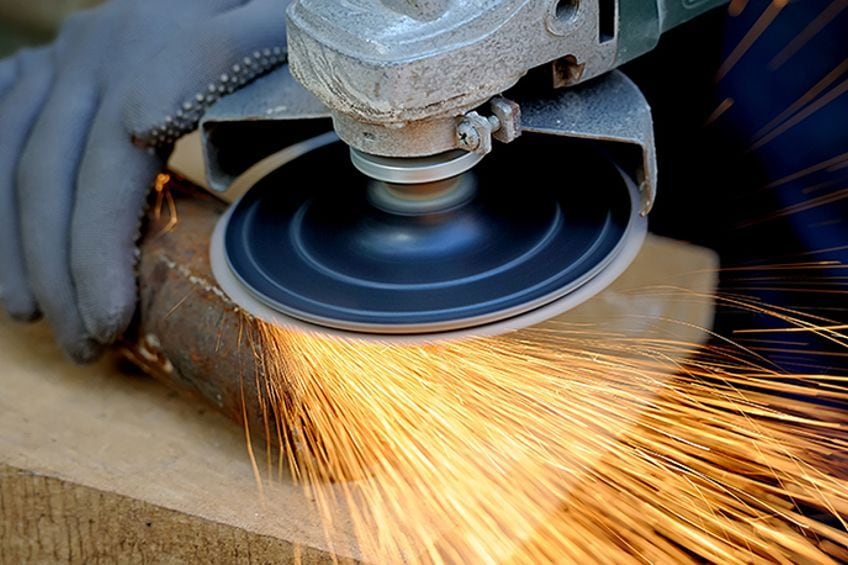
If you are working with a chemical stripper, it might be necessary to remove the paint with a scraping tool. Scraping tools are available in metal and plastic versions. They can be useful in removing paint from metal, particularly when utilized in conjunction with a chemical paint stripper. Later in the article, we will give a little more insight in terms of the mechanical paint removal method.
Eco-Friendly Paint Strippers
There are many alternative products available that offer an assortment of special features, certain of which are eco-friendly. Some forms of paint strippers contain an active ingredient that is made from citrus fruit. This active ingredient is called Limonene They also contain a bio-solvent called methyl coyote, which is made from soybeans. Both these chemicals work well in removing paint from metal. They are also much safer for you to work with. If you are looking to make the best choice for yourself, the environment, and the people around you, then select an eco-friendly stripper instead of a harsh chemical.
Regardless of the paint stripper that you select, you should always take a lot of care when you are working with them. You do not want to run the risk of damaging your respiratory system or your skin. Consult the manufacturer’s instructions and follow them with care.
Recommended Chemical Paint Strippers
There is an assortment of brands and types of paint strippers available on the market and it can seem very overwhelming to select one. You need to take into consideration the size of your project, and your personal preference when selecting the best paint stripper for metal.

Best Eco-Friendly Paint Stripper for Metal: DUMOND Smart Strip Paint Remover
Dumond’s Smart Strip is the perfect choice when you are looking for an environmentally-conscious option as the best way to remove paint from metal. This product will mean that you do not expose yourself to noxious vapors and toxic chemicals. The formulation of this eco-friendly paint stripper is made without harsh chemicals and caustic. It is a water-based, and biodegradable paint stripper that is also odor-free. What makes it a great product is that it is an effective product to remove practically any coating and is perfect for stripping steel and other metals such as brass, and aluminum.
- Non-toxic, water-based, and does not require neutralization
- Can easily be applied with a brush or a roller
- Environmentally friendly formula is biodegradable
PROS
- Neutralization is not required
- Non-toxic
- Can be applied with ease using a roller or a brush
- Biodegradable
- Water-based
- Effective and safe
CONS
- Longer stripping time
- Not as effective as harsh formulas
Best Bulk Buy Paint Stripper for Metal: SUNNYSIDE CORPORATION Multi-strip
This is the best option of paint remover for metal that can be purchased in large quantities. This product is the perfect option when you need to bulk buy, as it comes in a gallon bucket. This stripper is known for its versatility and can be used on metal. Thanks to the thick consistency it is ideal for coating vertical surfaces and can be applied with ease using a roller or a paintbrush. While this is not exactly an eco-friendly product, it is a lot gentler than other paint strippers out there. This is attributed to it not containing any caustic chemicals or methylene chloride.
- Safe and professional remover for paint and varnish
- Capable of removing up to 15 layers of paint, varnish, and stain
- Can be applied with a brush, a paint roller, or putty knife
PROS
- Acts quickly
- Removes paint from metal effectively
- Perfect for use on vertical surfaces
- Gentler than caustic strippers
- Can be safely used on metal
- Perfect for larger jobs
CONS
- Not completely eco-friendly
- Not as effective as some of the other harsher formulas
Most Convenient Paint Stripper for Metal: SUNNYSIDE CORPORATION Ready Strip
This is the ideal option if you require a paint stripper that is simple to use and easy to apply. The Sunnyside Corporation High-Speed Ready Strip is a premixed formula that is available in a spray bottle (trigger-operated). You will therefore not require any rollers or paintbrushes to apply it. Applying strippers to hard-to-reach areas is made so much easier, thanks to the trigger spray. In just 30 minutes the product works and can remove up to three layers of paint. As the name states, this product can get the job done. The product has a pleasant citrus-like smell and does not contain any harsh chemicals.
- Capable of removing up to 3 layers of various coatings
- The no-drip formula clings to vertical surfaces with ease
- Can be easily cleaned with water and works in 30 minutes
PROS
- Citrus-scented
- Easy-to-use trigger spray
- Thick, no-drip consistency
- Simple to use and works fast
- Takes only 30 minutes to work
- No harsh chemicals found in its formulation
CONS
- Not a great option for larger jobs
- Tough coats will prove to be too challenging
How to Remove Paint From Metal Using Paint Stripper
If you have to remove paint from the metal surface, using a chemical paint stripper is a great option. Unlike the mechanical method, which you would need power tools to do, this process is significantly easier.
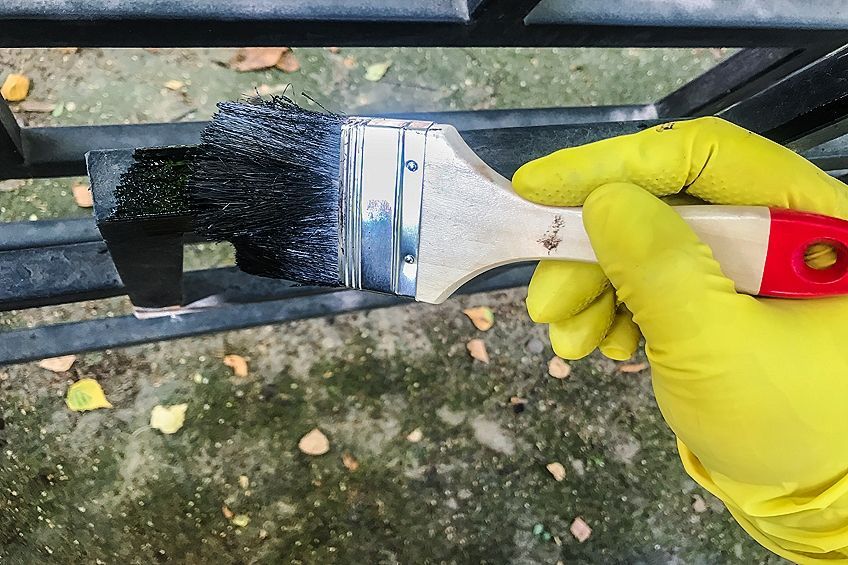
We have put together a tutorial that will illustrate how to remove paint from metal with the use of a chemical stripper. Be patient, work with care, and follow all safety guidelines as the chemicals can be very dangerous to your health. To begin with, you will need the following supplies:
- Newspaper or drop cloth
- Chemical paint stripper
- Scrubbing pads
- Respirator mask
- Roller or paintbrush
- Rubber gloves
- Mineral spirits
- Paint scraping tool
- Safety goggles
Prepare and Protect
Before you start removing the paint from metal you need to spend some time preparing your work area and protecting both the space and yourself. Cover your surface area with a drop cloth to provide protection. The cloth will protect your work area from any potential accidental splatter or spills. It will also help catch all the paint that will be removed from the metal, making it easy to dispose of. Newspaper can be used as an alternative to a drop cloth. If you are using newspaper, we suggest you use masking tape to tape it down, so that it does not shift around.
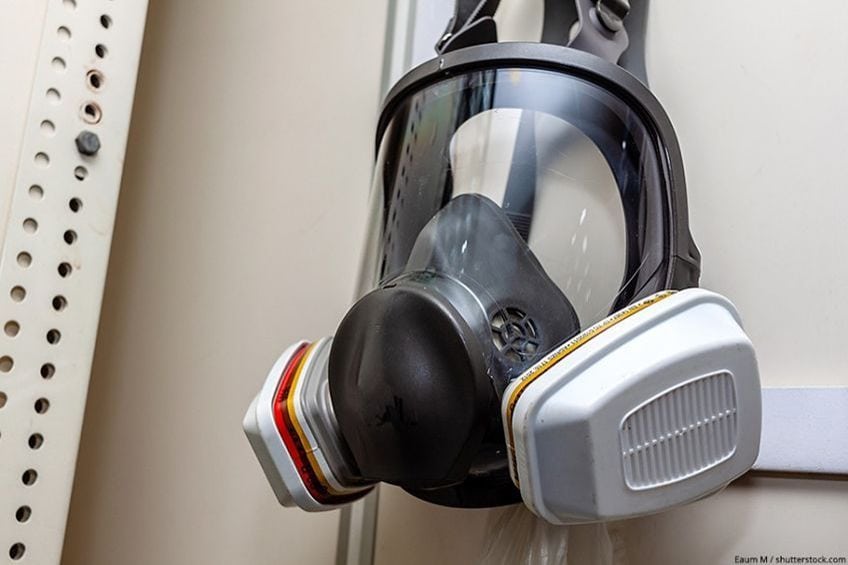
While chemical paint stripper is effective at removing paint from metal, it can be very dangerous for your health if you do not take care. When working with a chemical paint stripper you will need to wear a respirator mask, safety goggles, and rubber gloves. If you want added protection for your arms and legs from any splatter, we recommend wearing full-coverage clothing.
Applying the Paint Stripper
Once you are happy that your work area has been prepared and you are wearing the necessary safety gear you can begin removing the paint from the metal with the use of the chemical paint stripper. You want to choose a top-quality paint stripper, perhaps purchase one of the ones we have recommended earlier in this article. Using either a roller or a paintbrush you can begin applying the paint stripper to the painted metal.
Apply the product evenly and generously, ensuring you do not miss any spots.
You will know the paint stripper has started working when the paint begins to bubble. This is a good sign; it means that the paint is starting to lift off the surface of the metal. The type of paint and the type of paint stripper you are working with will impact the amount of time it takes for this to start happening. Be patient and watch as the paint stripper does its magic.
Scrape and Scrub
Once the paint stripper has finished doing its job, you will need to scrub at the surface. Work on the larger area first. Take the paint scraper and hold it at an angle of about 30 degrees from the surface of the metal. Certain areas may be tricky to reach with a paint scraper, you can tackle these areas with either a stiff-bristled brush or a scrubbing pad. Remove the paint from the metal by scrubbing over these areas.

Work carefully over the whole project. Should you have any stubborn patches you can reapply the paint stripper and repeat the scrubbing or scraping if necessary. This stage can take a significant amount of time, depending on the size of your project. Always consult the manufacturer’s instructions to determine the waiting time of your paint stripper, as it can differ from brand to brand.
Wipe and Clean
Once the paint has been removed from the metal, ensure you wipe down the surface so that no flakes of paint remain. Wipe down the entire surface using a cloth and some mineral spirits, ensuring that all areas are clean.
In doing this, you will remove any paint chips that remain and any excess paint stripper.
Finally, when you are happy that all the paint has been removed, you can rinse the project down using clean water. The water will wash away any residue and leave your metal surface nice and clean. Finally take a lint-free, clean cloth and dry your project.
Alternative Methods for Stripping Paint From Metal
You might not be too keen to use a smelly chemical paint stripper to remove the paint from metal. There are some other options available to you, we have put together a list of alternative methods of stripping paint from metal.

Paint Scraper
A standard paint scraper is perfect for use on a flat surface that has flaky and loose paint. You can find this tool in a variety of shapes and sizes, suited to different surfaces. If you are dealing with a smaller surface we recommend a narrow paint scraper, while you should use a wide paint scraper when dealing with a larger area. Certain paint scrapers have a steel blade which makes them ideal for stripping steel and other hard metal surfaces.
Paint scrapers that have a plastic blade are better suited for removing paint from softer metals such as aluminum and brass.
Angle Grinder With Stripper Attachment
If you are dealing with a larger area that has tough paint on it you might want to look into using a power tool. The perfect tool would be a straight grinder or an angle grinder. A drawback to such tools is that they create a lot of dust and debris and are very loud. That being said, when you have the correct attachment on your angle grinder the tool is very effective in removing paint from metal. You can purchase paint stripping discs and wheels in an assortment of sizes. The discs are made from several different materials, each offering its level of abrasion.
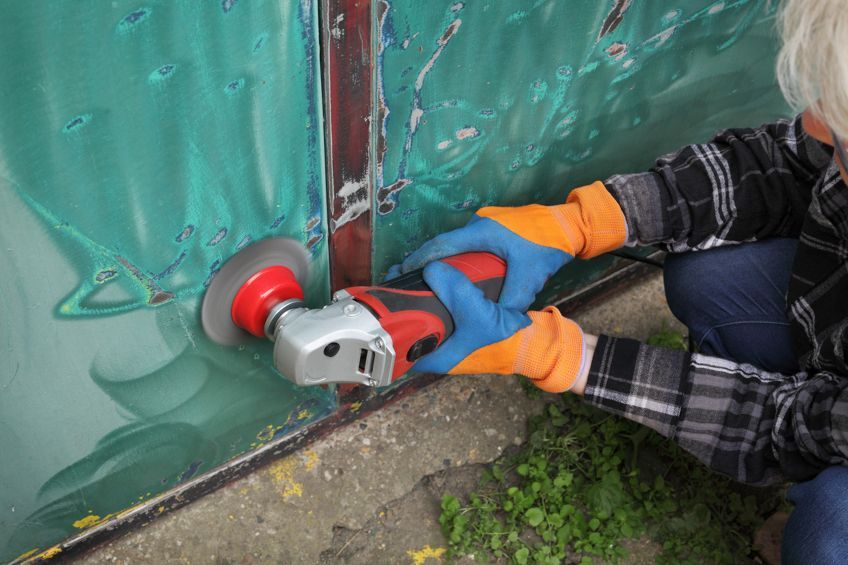
When selecting a paint stripping disc or wheel you need to take the condition of the paint you are wishing to remove into consideration. You will also need to take into consideration the type of metal you are working with. If you select the wrong attachment, you could potentially damage the surface, or the attachment will not remove the paint correctly. If you are going to use a power tool and abrasive attachment it is imperative that when working with these items that you wear the necessary safety gear.
Heat Gun
Heat guns are very versatile tools. In principle, you can use a heat gun to melt away the paint from the metal surface. However, the excessive heat given off by the heat gun can warp and damage the metal if you are not careful. When using a heat gun to remove paint from metal, begin with the heat on the lowest setting and move the heat gun from side to side until you notice the paint begin to lift and bubble.
If you find that the lowest setting is not effective, then turn up the heat incrementally until you begin to see the necessary results.
Work slowly and be careful when working. When the paint begins to bubble or lift, take a putty knife or paint scraper and remove the paint from the metal. We recommend using heat-resistant gloves when working with a heat gun. Allow the metal time to cool as it tends to retain the heat and if you are not careful you can potentially burn your skin. If you need to loosen up tough paint then this method is ideal.
Boiling Baking Soda Solution
If you have a small metal item that is awkward to work on due to the small angles and metal hinges. You can boil a quart of water and add a quarter of a cup of baking soda to create a solution. This solution needs to be brought to the boiling point and then you can lower the painted metal item into the liquid using a set of tongs. Be careful you do not splash yourself.
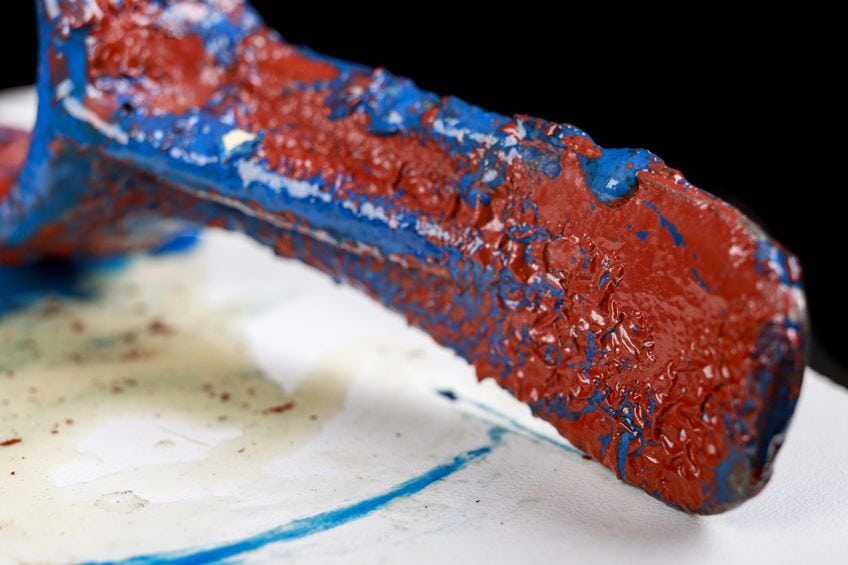
Leave the item in the water and boil it for roughly 15 minutes. This will cause the paint to loosen. When you have removed the item from the water, take a coarse bristle brush and scrub at the paint. We suggest you wear heat-resistance gloves when doing this method to ensure you do not avoid your hands. Instead of baking soda, you can use a quarter of a cup of white vinegar.
Tips and Tricks for Stripping Paint From Metal
We have put together a few additional tips and tricks to aid you when removing paint from metal.
- If you are using the mechanical method when stripping steel, you can purchase specialized abrasive paint removing attachments that work well on a hand drill. These attachments assist you in getting to hard-to-reach places that you might struggle to tackle when using your angle grinder.
- You might have some difficulty getting into tight spaces to remove the paint once the paint stripper has done its job. We recommend using an old toothbrush, to get into the nooks and crannies.
- Before you begin repainting, take care to thoroughly clean your metal item. Any stripped paint left behind will cause the fresh coat of paint difficulty in terms of adhesion. You will save yourself time and money by rinsing the metal with water and allowing the item time to dry.
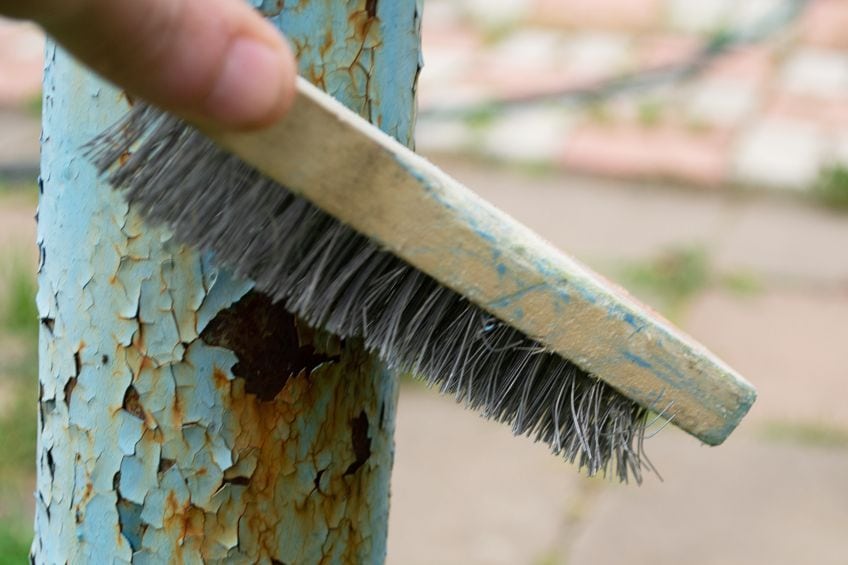
- You will create debris and dust when using a grinder that you do not want to spread all over the place when you are working indoors. Due to this, you want to ensure you are working either in a well-ventilated space or outside when dealing with paint strippers.
- If you are dealing with older paint (that has been applied before 1980) as the paint could potentially contain lead which is harmful to your health. Rather call in a professional to remove it.
- To ensure you do not damage the metal surface below the paint you should use a plastic paint scraper. Certain metals which are softer, like carbon steel and stainless steel, are more likely to scratch.
- If you use sandpaper or a wire brush you will cause scratches on the surface of the metal. If you are looking to achieve a brushed finish on a flat piece of steel you can use some 800-grit sandpaper to sand the surface, working in a single direction.
When it is time to select the best paint stripper for metal you will need to assess the condition of the project and the size before you go to buy any paint stripping chemicals. You will need to determine if a chemical paint stripper is required. Ideally, you want to be able to get the job done without having to work with any toxic chemicals, but sometimes that is not possible, particularly when you are working with a larger surface area of metal and tough paint. All manufacturers’ instructions need to be followed when using chemical paint remover.
Frequently Asked Questions
Will Paint Stripper Cause Permanent Damage to Other Surfaces?
Very harsh chemicals are used to make paint strippers, and they can ruin an assortment of different surfaces. When using a paint stripper, you can protect your work surface by placing down some old newspaper or a drop cloth. We also recommend you wear overalls, or old clothes when working with a paint stripper so you do not ruin your good clothes.
Can Chemical Paint Stripper be Applied to Brass?
You will be able to use a chemical paint stripper to remove paint from brass. You can use a brass polishing solution (such as Brasso) if the paint stripper has tarnished the brass, and you will be able to restore the brass to its original quality. To stop your brass from tarnishing you can simply apply a clear coat of lacquer paint. The coat will protect the brass surface from the elements.
Will Paint Strippers be Able to Remove All Types of Paint from Metal?
The majority of paint strippers can remove water-based and oil-based paints from metal surfaces. The effectiveness of the product will, however, vary from manufacturer to manufacturer. If you have to remove paints that are considered tougher, such as polyurethane or powder coating paints, the eco-friendly paint strippers may not be as effective as caustic paint strippers. If you are uncertain, rather consult a professional.
Can Paint Stripper Be Applied to Aluminum?
Yes, you can though it is important to note that caustic paint strippers can potentially cause damage to the surface of the aluminum. Be careful when removing paint from aluminum surfaces as the metal is quite soft and can easily be damaged. We recommend using a solvent stripper when stripping paint from metal.
What Chemicals Are in Paint Stripper?
Paint strippers contain many different chemicals. These include isopropyl alcohol, sodium hydroxide, lacquer thinner, ammonia hydroxide, toluene, acetone, and methylene chloride. These chemicals are extremely toxic and can cause significant harm to your eyes, skin, and respiratory system. We recommend that when working with paint strippers you should wear the relevant protective gear.
How Long Should Paint Stripper Be Left on the Painted Metal Surface?
It all depends on which brand of paint stripper you have chosen to use as the time it takes paint stripper to work varies from manufacturer to manufacturer. On average you should allow the paint stripper 30 minutes before you begin to see the paint bubbling. Ensure you apply the paint stripper evenly and generously.
Can I Use Vinegar to Remove Paint?
Sadly, vinegar on its own will not remove paint from metal but if you use vinegar and heat you might be successful. Add a quarter of a cup of vinegar and a quarter of a cup of water to a pot on the stove. Allow the solution to come to a boil and then place the item directly into the solution. It will take about 15 minutes for the paint to soften and then you can scrub the paint off the metal. Rather go with a different option to remove paint from metal, if you are working with a larger surface area.

